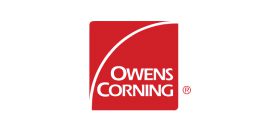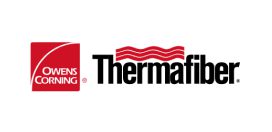The latest building energy codes are driving greater energy efficiency, which means tighter and better insulated buildings. But a building built just to code is only meeting the legal minimum, not delivering customer value beyond that baseline. Designing and constructing beyond code—including quality commercial building insulation installation—delivers buildings that are more energy efficient, quieter and healthier, which can give you a competitive advantage.
4 great reasons to insulate
1. Greater energy efficiency, lower energy bills
The value of energy efficiency is obvious: it saves building occupants money on energy bills and reduces power plant CO2 emissions to lower carbon footprints. The benefits continue to grow in importance as energy bills rise and the public becomes more conscious of carbon impact. Over the last few years, over a dozen major metro areas in the US have enacted commercial and multifamily energy benchmarking requirement,1 which means that existing buildings are required to report on annual energy use and get scored from 0-100 based on their performance. Often these scores are made public and disclosure is required for any real estate transaction—which can influence prospective buyers and tenants. As energy efficiency figures more prominently into building transactions, savvy commercial building professionals will recognize and capitalize on this trend by designing and constructing buildings that exceed code and standout from competitors.
2. Meeting occupant needs for comfort
Thermal comfort is a major driver of occupant satisfaction. A building that is uncomfortable or has significant temperature variations is likely to result in disgruntled occupants. Insulation and air sealing are key drivers of thermal comfort, but meeting code is no guarantee of occupant satisfaction. In fact, ASHRAE has a separate standard for meeting occupant expectations for thermal comfort: ASHRAE Standard 55-2013 (which is separate from the 90.1 Standard for commercial building energy codes).It may be easy to assume that more localized control of heating and cooling is the answer to satisfying occupants throughout a building. But without proper insulation and air sealing, heat will always move to cold areas—which means occupants will use even more energy trying to stay comfortable.
3. Acoustic Impact
The body of evidence demonstrating the links between noise and workplace productivity and satisfaction continues to grow. A recent survey by Cambridge Sound Management revealed 30% of office workers are distracted by coworkers’ conversations.2 Similarly, another survey stated 60% of employees report being more productive when the office is quiet.3 As the trend toward more open workspaces, floating walls and glass elements continues to grow, so does the issue of noise. Acoustic design is highly complex and dependent on many building factors—including building type, location and occupancy. Insulation alone may not be able to deliver a quiet workspace, but it should absolutely be part of acoustic design and solutions. The acoustic properties of different insulation types should also be compared and evaluated.
4. Sustainability and Responsibility
In 2015, an estimated 40-48% of new non-residential construction will be “green”,4 and as of August 2015, 13.8 billion square feet of building space is LEED certified. How does this impact commercial building professionals? Lease rates for “green” spaces can be up to 20% above average,5 manifesting in high rental prices and decreased vacancy rates.6
Comparing and choosing insulation types is an important part of sustainable design, contributing to lower energy use, improved indoor air quality, and greater comfort. Certain insulation types can also contribute to requirements for recycled content and minimizing GHG emissions.
References
–+- http://imt.org/resources/detail/comparison-of-commercial-building-benchmarking-policies
- http://www.fastcompany.com/3038590/secrets-of-the-most-productive-people/the-not-so-silent-office-productivity-killer
- http://www.buildings.com/article-details/articleid/18223/title/combating-acoustical-issues-in-open-work-spaces.aspx
- http://www.usgbc.org/articles/green-building-facts
- http://www.usgbc.org/articles/business-case-green-building
- http://www.usgbc.org/articles/business-case-green-building











